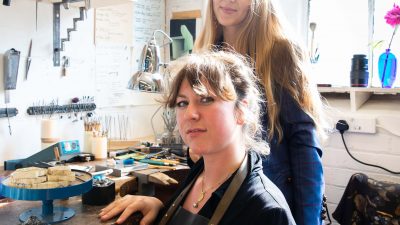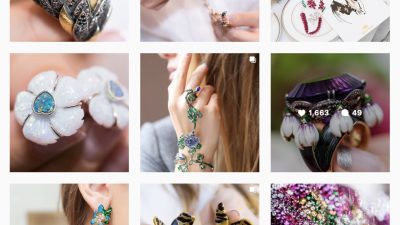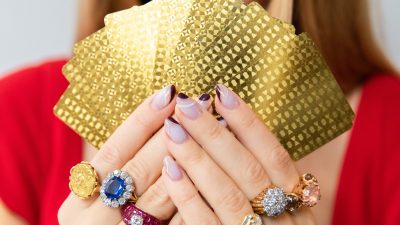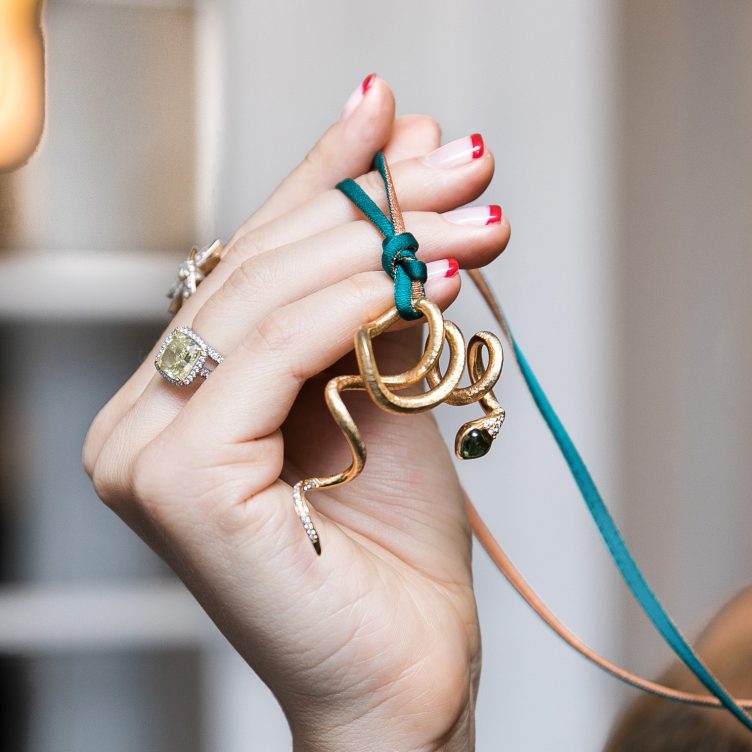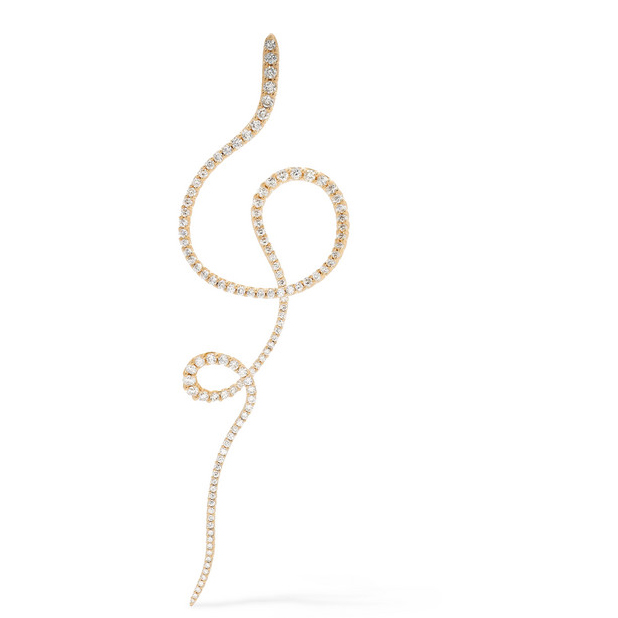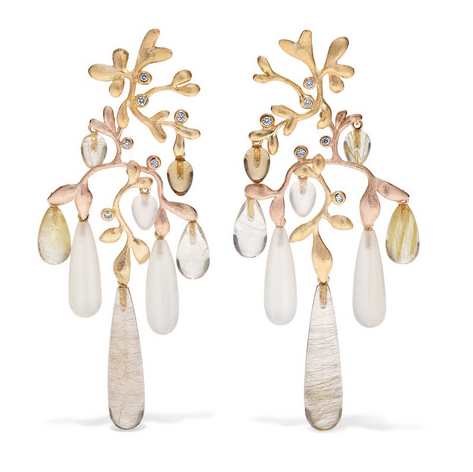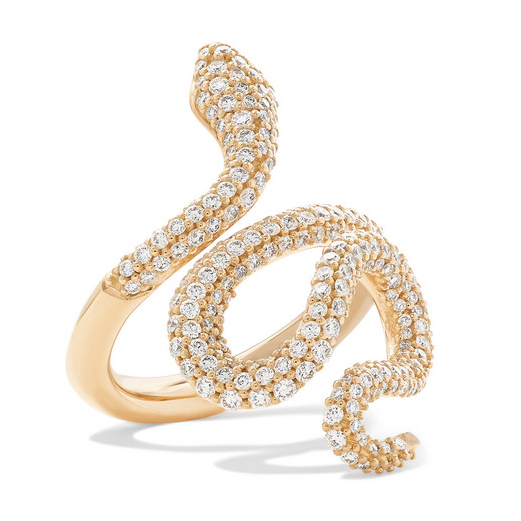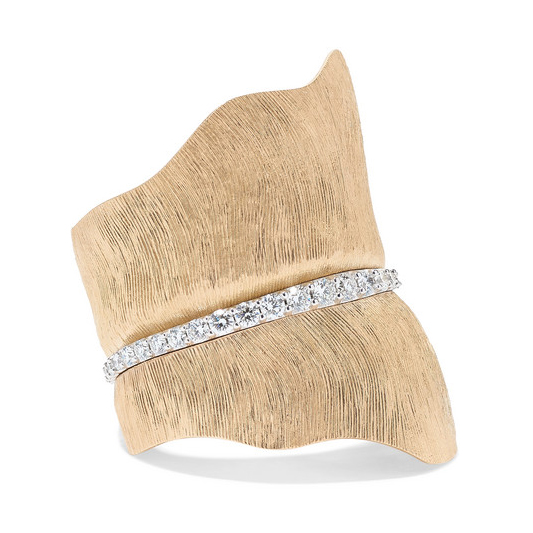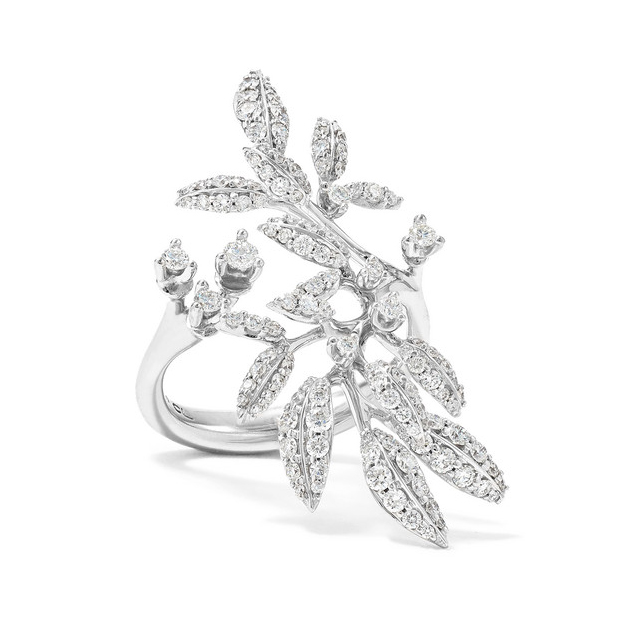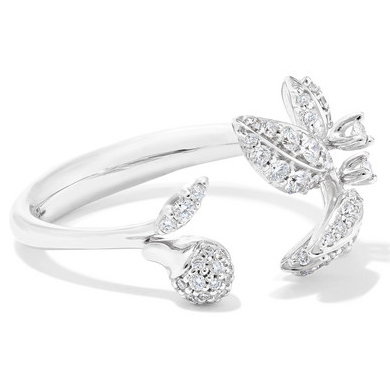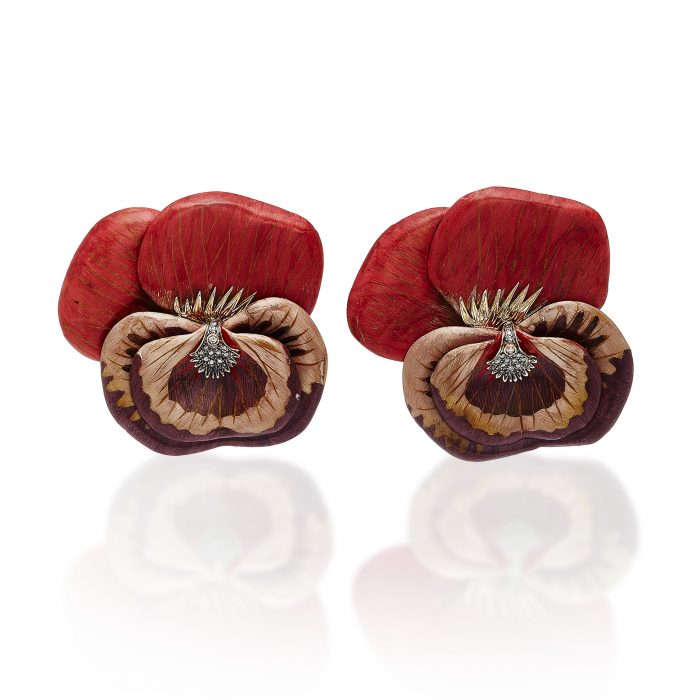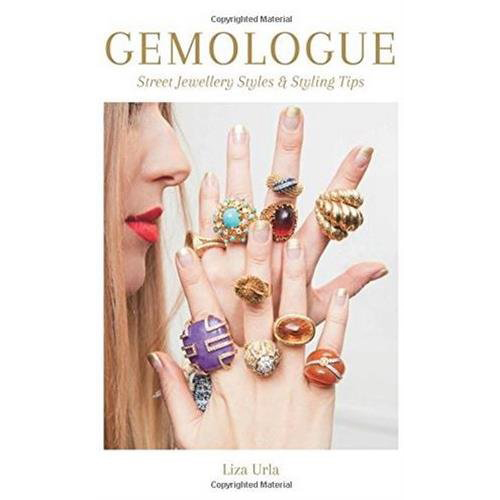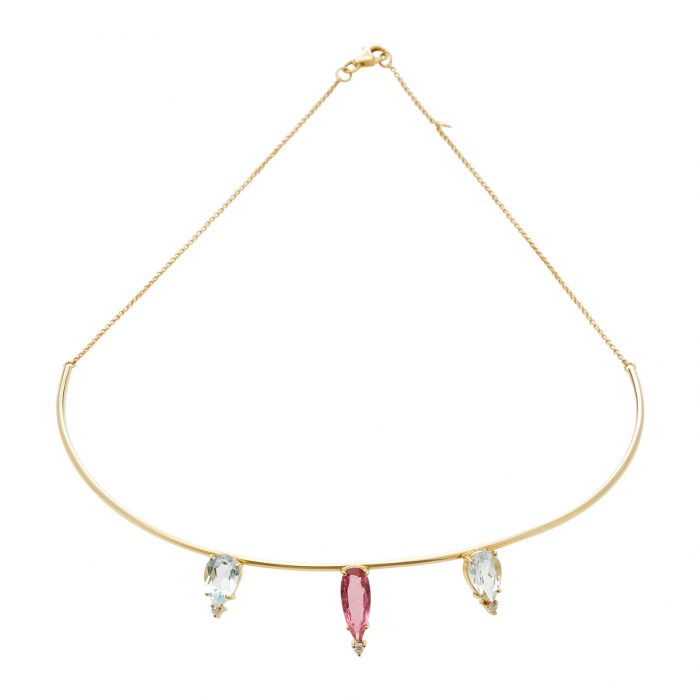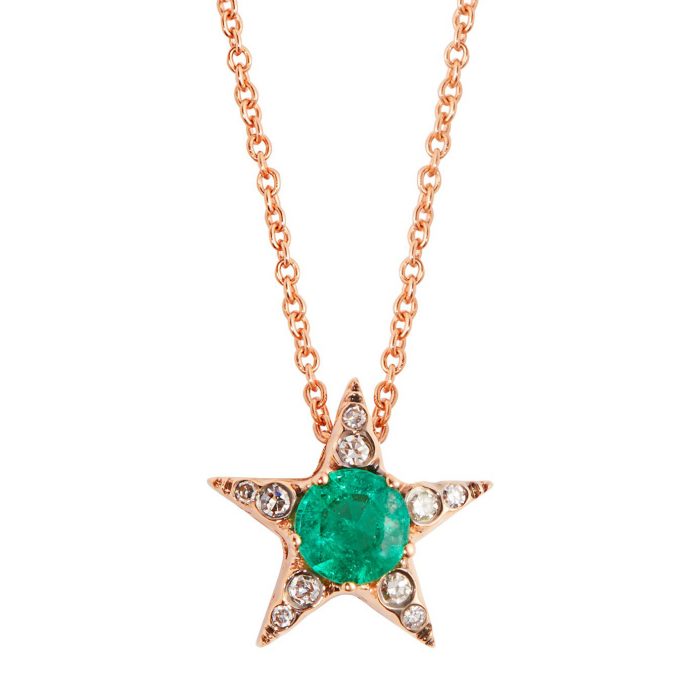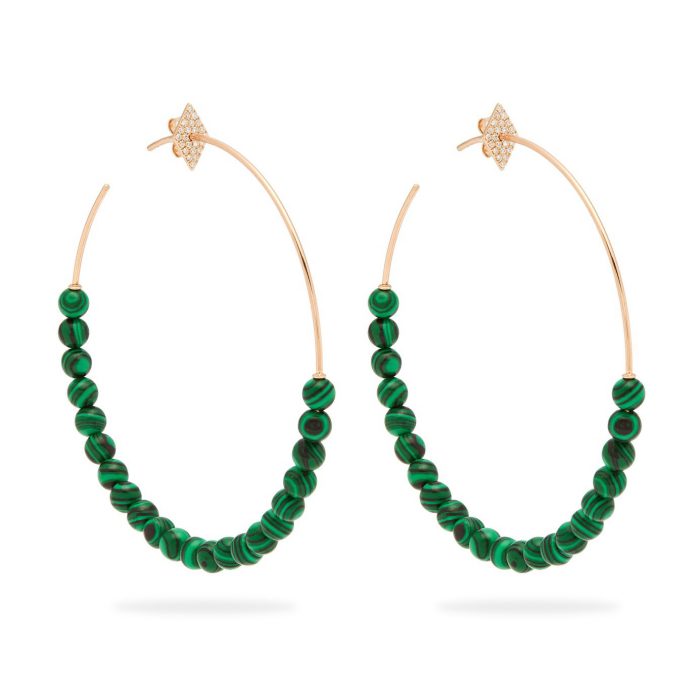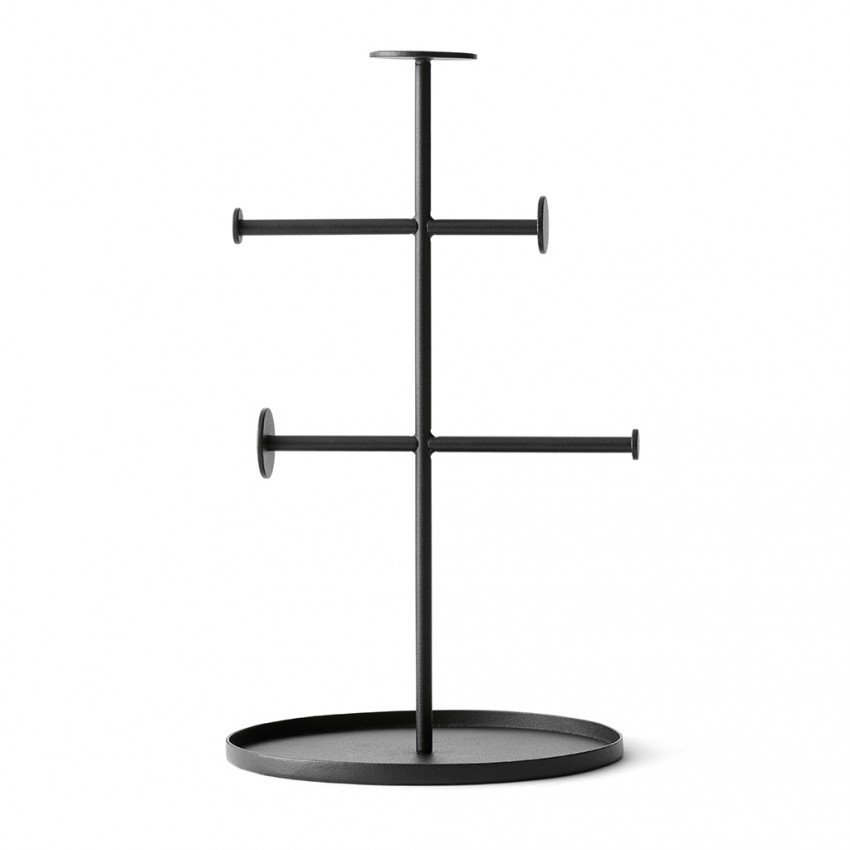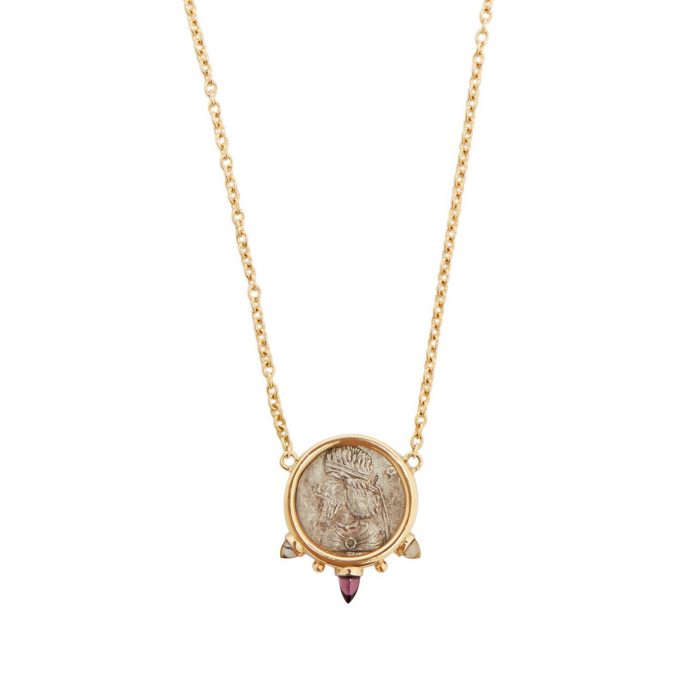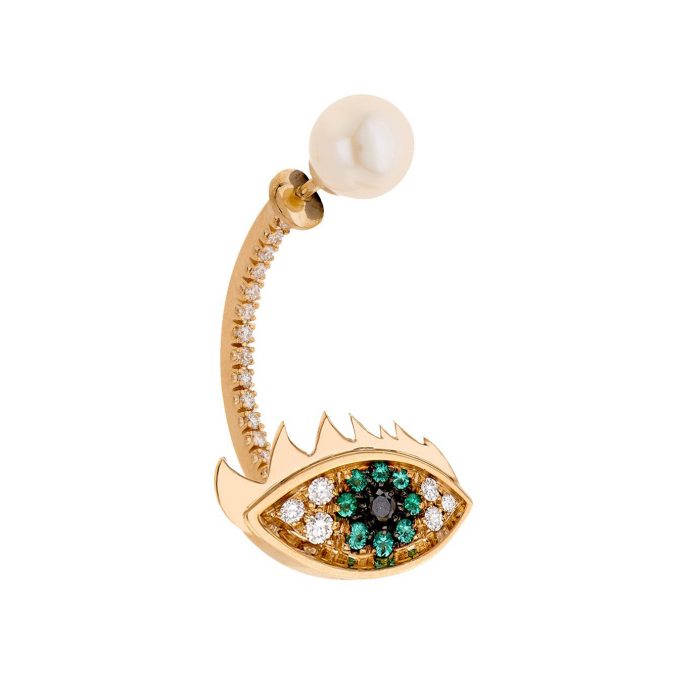THE CRAFTSMANSHIP OF OLE LYNGGAARD COPENHAGEN: HOW SNAKE PENDANT CAME TO LIFE
We all love the sparkle and lustre of a beautiful jewel, but have you ever wondered how each piece is created from start to finish? GEMOLOGUE is bringing you the craftsmanship series aiming to educate and give you an appreciation of the process and how a spectacular jewel comes to life. While other sectors of industry are losing manual skills to automation, jewellery-making stands true its ancestry. I particularly love brands that invest in age-old jewellery-making workshops, conserving traditional techniques and perfecting new ones. THE CRAFTSMANSHIP OF… series will feature design elements, craftsmanship and the labour of love behind every jewel.
Discover The Craftsmanship Of Ole Lynggaard Copenhagen and how the 18k gold and green tourmaline snake pendant came to life!

OLE LYNGGAARD COPENHAGEN
I had the absolute pleasure of visiting the Ole Lynggaard workshop as a part of my trip to Copenhagen Fashion Week with the Jewellery Room. There are 45 goldsmiths working in the studio of this family-run jewellery brand, making it one of the largest fine jewellery workshops in Northern Europe. With this kind of reputation, it’s no wonder the Lynggaard jewellery brand has the noble distinction of being the appointed jewellery designer for the Royal Danish Court.
Let’s take a look at how the serpent motif began.
“With a nod to the past, old traditions are kept alive and new techniques are born unifying the past and present… bringing proud traditions to the new era… ancient craftsmanship & traditions plus state-of-the-art technology” – Ole Lynggaard.
INSPIRATION BEHIND THE JEWEL
Drawing inspiration from the beauty he finds on his world travels, Ole Lynggaard first fell in love with the serpent’s beauty and slender elegance during a visit to the Museum of Cairo in 1960. He was captivated by the exquisitely detailed snake ornaments on display and felt the call of the muses to create something special for his lovely wife. Everyone loved the snake design and how it wriggled on the ears, fingers, arms and neck. It was the beginning of the brand’s most beloved Snakes Collection – a sensual emblem embodying the opposites of good and evil, and the eternal struggle to resist temptation.
DESIGN PROCESS
Watching the goldsmith carefully begin his serpent creation, I saw how the design process unfolds. First, he crafts a series of wax moulds by hand, carving each to the design specifications before making a cast. He then grinds, polishes and adds final touches to each sample until he is satisfied with the shape and overall structure of the piece. Before proceeding to the next step creating texture and contrast, the piece goes to Ole and Charlotte Lynggaard for their feedback. Lynggaard believes this step is vital to get the feeling exactly the way he envisioned it.

Ole and Charlotte Lynggaard carefully select the colours of the gemstones for each piece, balancing the tone of the gold with the sparkle of the jewels. These precious stones are then set by the workshop’s skilled goldsmiths, taking the greatest care not to damage the more fragile stones.
This master jewel is now ready for production and will form the prototype for an entire new collection. The production process is a tricky one. Lynggaard uses a multi-layered effect requiring several different moulds and pieces to bring the snake to life. Meticulous evaluation makes sure each jewel follows the same thickness, movement, and feeling as the masterpiece in the collection.

CRAFTSMANSHIP
Polishing – is a lengthy part of the process, but Ole Lynggaard believes only traditional methods can create the kind of refinement he wants in his jewellery. Rapid prototyping and 3D printing are no substitute for the work of a skilled craftsman. He needs special tools to create the desired effect, but a skilled craftsman uses his or her hands and responds to the sound and feel of the precious metal as they work with it. The precise measurements of a computer cannot achieve the same effect; the balance feels off so it’s unnatural to the eye. The feel of a piece is all about balance. By polishing and refining the piece by hand, you feel the energy of the craftsman in all the bends and turns of the snake’s body with the same thrill as a rollercoaster!

Satinising technique – another traditional polishing method favoured by Lynggaard to create a refined satin-like effect to the precious metal. It is all done by hand using special tools like a shading engraver. Often Charlotte Lynggaard likes to get inventive with satinising and will design surfaces resembling the bark of a tree or the skin of a snake. The result is this amazing contrast between the polished surface, the satinised surface and the other elements of the piece for a highly sensual finished product.

SHOP OLE LYNGGAARD JEWELLERY ONLINE:
In the Snakes Collection, Ole Lynggaard imagines the whole anatomy of the snake from its round belly to the curve of the spine as it moves. You can almost feel it moving! The unfinished piece has balance and satinising brings it to life.
Soldering – is part of the assembling process and requires high temperatures to join pieces of this snake pendant together. Lynggaard prefers hot soldering at 700 to 800ºC because you’re working at a molecular level as opposed to working at the surface level gluing pieces together at lower temperatures. It makes for a stronger piece of jewellery.
CRAFTSMEN
Usually it takes several craftsmen to work on one piece of jewellery, but Ole Lynggaard believes in dedicating yourself to the heart and soul of each piece, and encourages his goldsmiths to do the same. The goldsmiths that work at his workshop in Denmark have spent four years in training and another 10 years honing their crafts. They take great pride in owning the entire jewellery-making process and it gives them a great sense of accomplishment. It makes a big difference to the finished piece.

GEMSTONES & GOLD
Ole and Charlotte Lynggaard chose this emerald-coloured heart-shaped cabochon tourmaline for its warmth. It works really well with 18k yellow gold and is cut and carved to capture the maximum amount of light to increase the lustre. For a sparkling touch and to create movement and shimmer in the serpent’s tail, 12 diamonds in 7 different sizes were used from 0.77 mm to 1.30 mm. It all about attention to the smallest details! If the same sized diamonds were used, the piece would loose the movement and fluidity, which makes it so effortlessly beautiful.

Thanks for stopping by! What do you think of these wonderfully wriggly snakes and how they were created? Leave me a message in the comments below. You might also want to discover how is fine jewellery made by Ara Vartanian in his Sao Paulo workshop!
If you loved this article share with your girlfriends on Pinterest!

I am extremely happy to announce that my new jewelry book – GEMOLOGUE: Street Jewellery Styles & Styling Tips – is now on Amazon. I’m so excited. It’s the first book of its kind solely dedicated to jewellery.
You can sign up for GEMOLOGUE newsletter below and I also share jewellery on Instagram, Twitter, Facebook and Youtube if you’d like to connect, or feel free to say hello info@gemologue.com
SHOP MY FAVOURITE JEWELRY ONLINE:
GEMOLOGUE jewelry blog by Liza Urla is a celebration of fine, fashion and vintage jewellery featuring talented jewellery designers, trendy urban street style, exclusive interviews and rare jewellery reviews. This jewellery blog’s goal is to encourage and educate about jewellery online in a fresh and original fashion to inspire women and men across the globe in a fashion and travelling context.
Jewellery blogger, writer Liza Urla, the founder of GEMOLOGUE, is a London-based and NYC-educated gemologist, who has travelled to and lived in many countries. She is now one of the most influential digital jewellery tastemakers. Her jewellery influence has been acknowledged by Financial Times, The New York Times, Vogue and Harper’s Bazaar.
*Photographed by Liza Urla. Styling and Art Direction by Liza Urla. All photos belong to GEM Kreatives for GEMOLOGUE.
Material on this website may not be copied, broadcasted or adapted without written consent.

